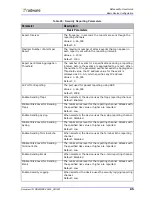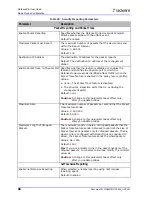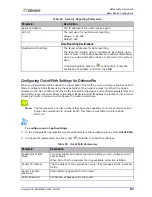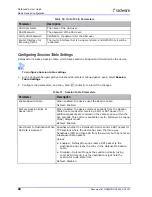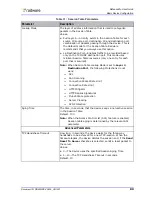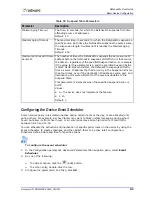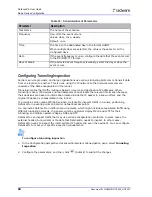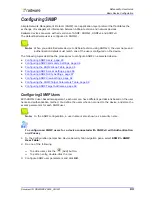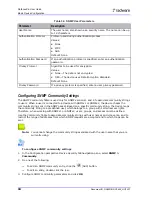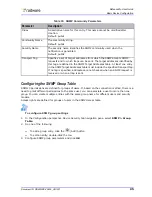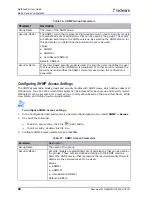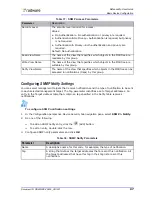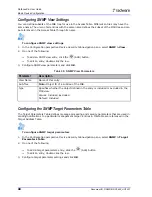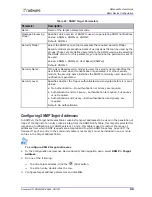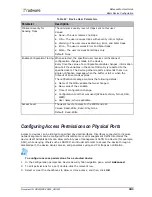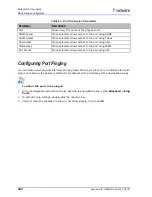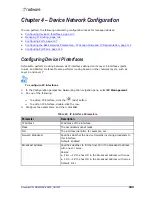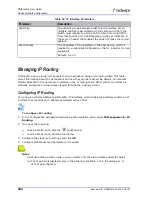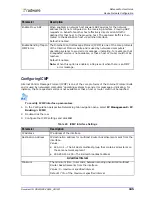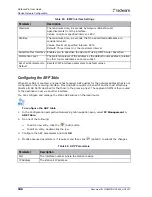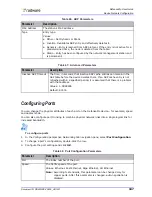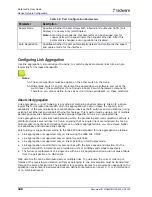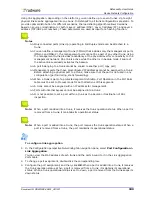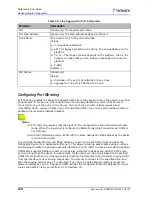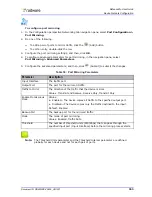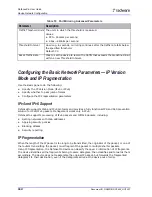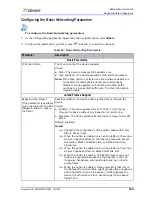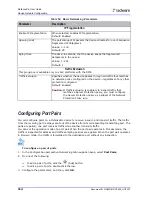
DefensePro User Guide
Basic Device Configuration
Document ID: RDWR-DP-V0602_UG1201
99
Configuring SNMP Target Addresses
In SNMPv3, the Target Addresses table contains transport addresses to be used in the generation of
traps. If the tag list of an entry contains a tag from the SNMP Notify Table, this target is selected for
reception of notifications. For SNMP versions 1 and 2, this table is used to restrict the range of
addresses from which SNMP requests are accepted and to which SNMP traps may be sent. If the
Transport Tag of an entry in the community table is not empty it must be included in one or more
entries in the Target Address Table.
To configure SNMP target addresses
1. In the Configuration perspective Device Security tab navigation pane, select SNMP > Target
Address.
2. Do one of the following:
—
To add a target address, click the
(Add) button.
—
To edit an entry, double-click the row.
3. Configure target address parameters and click OK.
Table 40: SNMP Target Parameters
Parameter
Description
Name
Name of the target parameters entry.
Message Processing
Model
Specifies which version of SNMP to use when generating SNMP notifications.
Values: SNMPv1, SNMPv2c, SNMPv3
Default: SNMPv1
Security Model
Select the SNMP version that represents the required Security Model.
Security models are predefined sets of permissions that can be used by the
groups. These sets are defined according to the SNMP versions. By selecting
the SNMP version for this parameter, you determine the permissions set to
be used.
Values: SNMPv1, SNMPv2c, User Based (SNMPv3)
Default: SNMPv1
Security Name
If the User Based security model is used, the security name identifies the
user that is used when the notification is generated. For other security
models, the security name identifies the SNMP community used when the
notification is generated.
Security Level
Specifies whether the trap is authenticated and encrypted before it is sent.
Values:
•
No Authentication—No authentication or privacy are required.
•
Authentication and No Privacy—Authentication is required, but privacy
is not required.
•
Authentication and Privacy—Both authentication and privacy are
required.
Default: No Authentication
Summary of Contents for DefensePro 6.02
Page 1: ...DefensePro User Guide Software Version 6 02 Document ID RDWR DP V0602_UG1201 January 2012 ...
Page 2: ...DefensePro User Guide 2 Document ID RDWR DP V0602_UG1201 ...
Page 20: ...DefensePro User Guide 20 Document ID RDWR DP V0602_UG1201 ...
Page 28: ...DefensePro User Guide Table of Contents 28 Document ID RDWR DP V0602_UG1201 ...
Page 116: ...DefensePro User Guide Device Network Configuration 116 Document ID RDWR DP V0602_UG1201 ...
Page 302: ...DefensePro User Guide Real Time Security Reporting 302 Document ID RDWR DP V0602_UG1201 ...
Page 308: ...DefensePro User Guide Administering DefensePro 308 Document ID RDWR DP V0602_UG1201 ...
Page 324: ...DefensePro User Guide Troubleshooting 324 Document ID RDWR DP V0602_UG1201 ...

